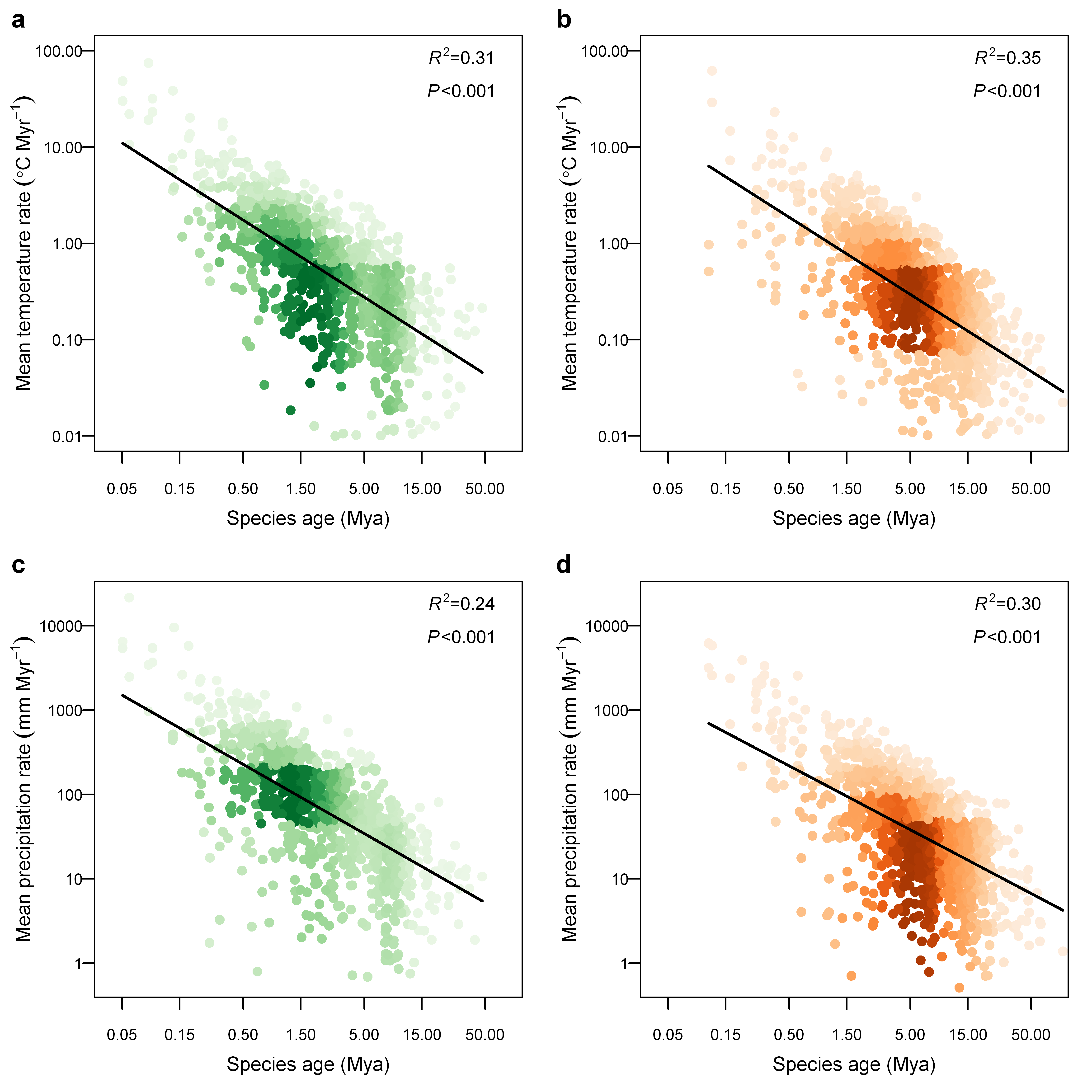
Given the fundamental biological differences in plants and animals, previous research proposed that plants may have broader environmental tolerances than animals but are more sensitive to climate. However, a recent study has found that there are actually “general rules” of climatic-niche evolution that span plants and animals.
Climatic niches describe where species can occur and are essential to determining how they will respond to climate change. For this reason, climatic niches are critically important for answering many of the most fundamental and urgent questions in ecology and evolution. To advance scholarship in this area, Dr. LIU Hui and Dr. YE Qing from the South China Botanical Garden of the Chinese Academy of Sciences, together with Dr. John J. Wiens from the University of Arizona, initiated research on patterns of climatic-niche evolution across plants and animals.
The researchers developed a systematic picture of how climatic niches for species evolve, based on 10 hypotheses. They used phylogenetic and climatic data for 19 globally distributed plant clades and 17 globally distributed vertebrate clades (2,087 species total) along with a large number of phylogenetic models.
The most unexpected finding was that, in both plants and animals, rates of niche evolution were similarly slow (1.44 and 0.82 °C per million years [Myr-1] for mean annual temperature; and 226.0 and 126.0 mm Myr-1 for annual precipitation, for plants and animals, respectively), and changed faster in younger (more recently diverged) clades (Fig. 1).
Those rates were about 10,000 times slower than recent and future climate change speeds, based on calculations conducted by Dr. Wiens. This is extremely important, because it warns us to pay more attention to the high extinction risks for both plant and animal species, especially if we cannot slow down climatic changes caused by humans.
"In ecology, people also used to think that species with wider climatic niches might evolve faster, given that widely distributed species might have broad tolerances and fast adaptations." Dr. LIU said. "However, we proved that this was not true." The reasons included one of their confirmed hypotheses, i.e., that climatic-niche widths are dominated by seasonal variation within localities rather than variations across all global localities. Thus, the most dramatic environmental stresses came within small habitats that might drive evolution.
Ultimately, why is climatic-niche evolution similar in plants and animals? In short, niche conservatism, physiological constraints, trade-offs, and latitudinal patterns of variability and seasonality all play important roles in determining global sorting and the evolution of climatic niches of plants and animals. Disentangling these causes will be an exciting area for future research.
Overall, this study explains why biogeographic regions, diversity hotspots, life zones, and richness patterns are often similar between plants and animals, despite both showing enormous diversity. The authors also indicate that plants and animals may have similar responses to climate change, which is important in predicting future species distribution and climatic-niche evolution under climate change scenarios.
This study, published in the journal Nature Ecology & Evolution on Mar. 23, 2020, was supported by the National Natural Science Foundation of China and other funding sources.

Fig. 1 Relationships between rates of climatic-niche evolution and species age. Results of phylogenetic models are similar between plants (green) and animals (orange), with darker colours indicating greater overlap of data points. (Image by LIU Hui)

86-10-68597521 (day)
86-10-68597289 (night)

52 Sanlihe Rd., Xicheng District,
Beijing, China (100864)

